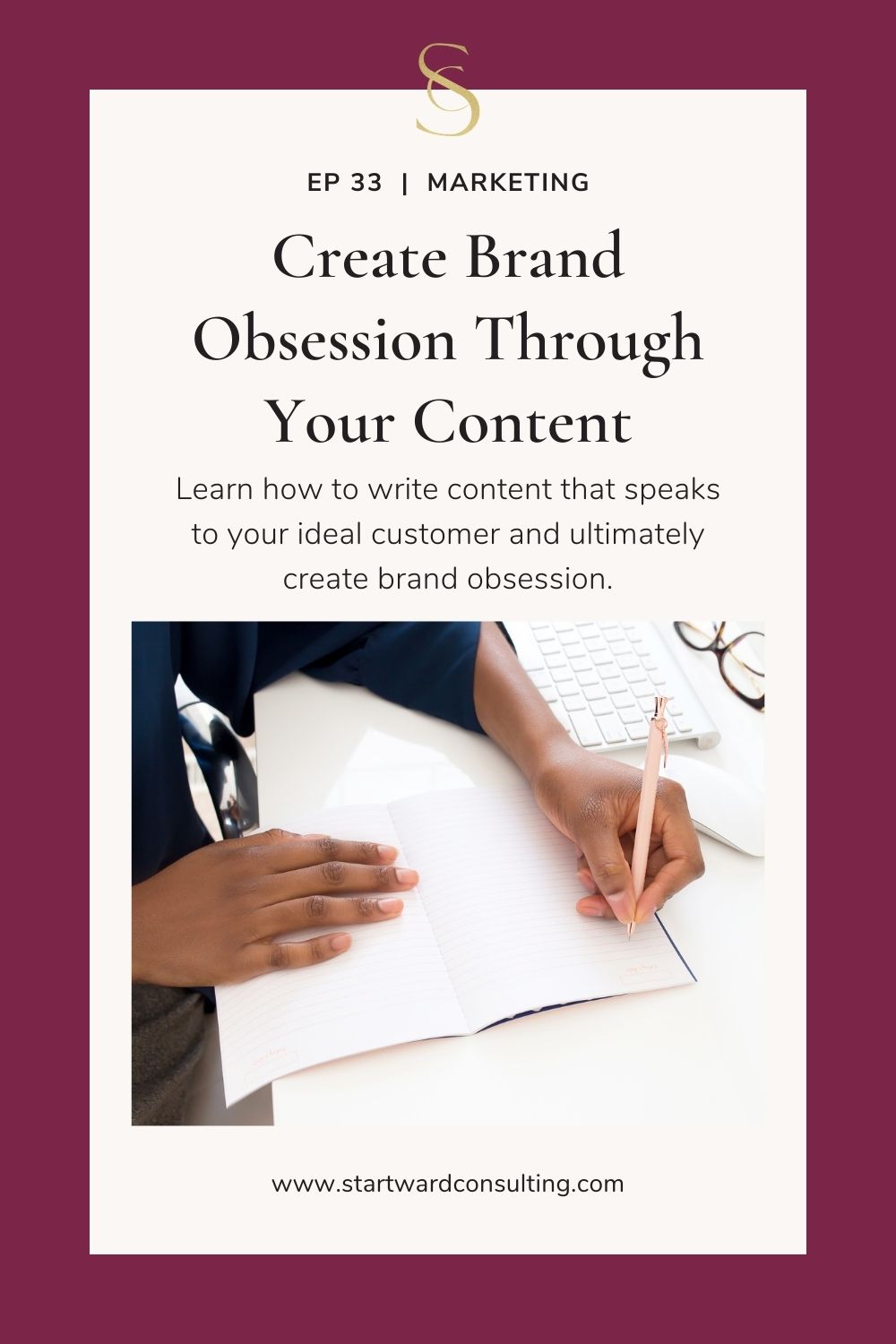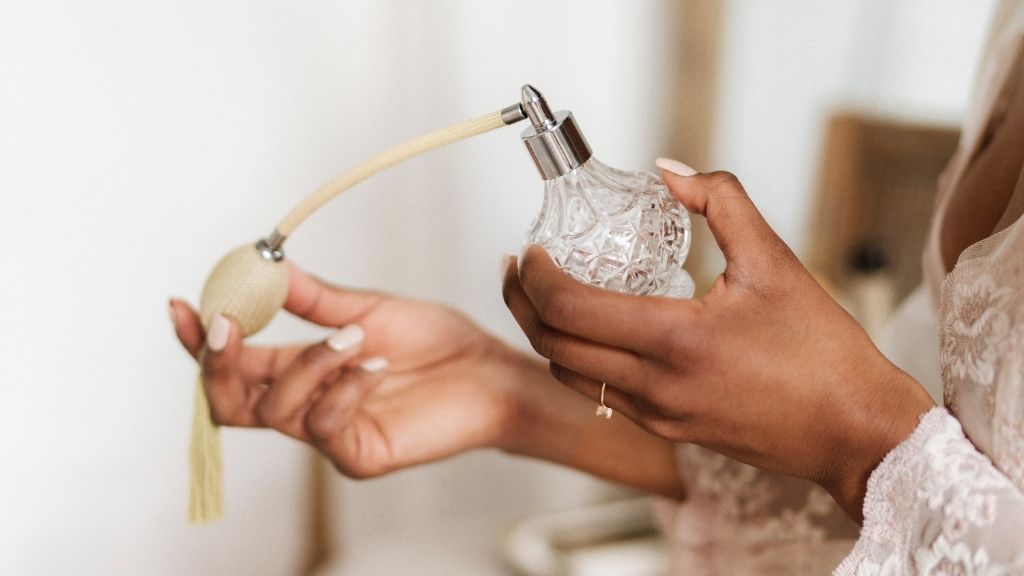Episode 33: Create Brand Obsession Through Your Content

Are you ready to write content that converts for your eCommerce business? Get ready to learn how to write content that speaks to your ideal customer, take your audience (successfully) through every stage of the customer journey, and ultimately create brand obsession.

The Customer Journey
Everyone has gone through the customer journey. It starts with awareness. One example I use is the time I got hooked on the digital notebook trend. It's March 2022 when I'm sharing this, but I knew about the reMarkable last year in January 2021. When I first learned about it, I wasn't 100% convinced that this thing is going to work for me. So I went through the entire funnel of a customer journey. However, I didn't purchase until Black Friday when they did a free shipping promotion. After 11 months of knowing about the product, I finally made the decision to purchase.
So in the same way I experienced that journey, you have probably experienced it for something that you truly desire to buy. We aren't exception! That's exactly what your audience is going through. Because you know that your audience is going through that journey, it's our job to map out our content based on those different phases.

The Key Things for Content That Creates Brand Obsession
These days, many of us are relying on organic marketing strategies to grow our businesses. This means that writing content that converts into sales is very important. You need to think about your content marketing so that you can really leverage the organic strategies for your business. We’re going to do this by first thinking about what you are already doing. Then, you’re going to look at opportunities for growth. This process will equip you to begin shifting your content into content that actually creates brand obsession.
One: Know Your Ideal Customer
Knowing your customer doesn’t necessarily mean knowing their demographics. Instead, it means knowing what their number one problem is. This leads to knowing the products they need to solve that problem.
For example, if you’re in the haircare industry, you need to ask, “What problem is my ideal client particularly facing?” Are they experiencing dry hair, breakage, or maybe hair loss? Identify the one primary challenge that a problem can solve. Then you need to assess if you offer this kind of product.
If you have many products, it’s time to start leaning on your best seller. This is a product that sells even when you're not actively marketing it. This product is what's going to ultimately drive the sales in your business.
A second part to this process is assessing what products your ideal customers are buying. After all, if they aren’t purchasing your products, they must be getting something else! For example, if your audience experiences hair loss, they may be purchasing wigs. If you know their alternative, you can come in and talk about the pro’s and con’s of your solution. You can speak to the repercussions of the product they’re currently using and begin to convert them to your product.

Two: The Emotional Benefit of Your Product
It’s important to know the emotions your audience is currently experiencing. There is a kid of stress or pain they’re experiencing if they need a solution. Let’s stick with the hair loss example. If you’re losing hair, you may be lacking confidence or feeling stressed. As a black woman with my edges completely snatched, I'm constantly wondering about the best glue to use. I’m also looking for a solution to lay my edges. This is stressful! But most woman don’t articulate that stress.
This means that anytime you're putting out a message, your job is to publicly call out what your audience is privately thinking. Then this emotional stress is what leads somebody to buy. So think about the emotional benefits that your product provides, and make sure you’re calling it out.

Three: Functional Benefits and Features of Your Product
Many of us do a very good job at this stage. If you go into a content audit, you probably spent 90%, talking about how your product is organic, natural, and made of clean ingredients. And you need to do this. But you also have to understand what part of the customer journey your audience is in.
Then think about the features of your product. These could include certifications like clinically or dermatologically approved. If your audience pays attention to that, these certifications become a buying motivator or at least a buying factor.
Then you’ll want to communicate how their life will look after they use your product. This is the ultimate transformation. Following the haircare example, let’s say you're selling an oil that allows my edges to grow. What's that transformation? Of course, it's growth for my edges. But on a deeper level, you want to call out how that will make me feel.
Then lastly, you have to think about your audience’s objections. Don’t fool yourself into thinking no one has an objection; everyone does. So every time you get a new person into your ecosystem, then you need to discover what is an objection that person has. That objection is the reason why they're not buying. Often, price isn’t the true objection. It is the one articulated the most, but there are underlying objections that make the price undesirable. You need to find out those objections and speak to them.

Speaking To All Stages of The Customer Journey
Once you have truly gotten to know your customer, then you need to go back and evaluate your content. Are you addressing the problem? Many times, you’ll assume that your customers already know that you address the problem. However, they don’t!
Every time if you're putting out content, you're going to get new people in your ecosystem. They may not know what you address. For example, if you’ve been in business for a while, you’ll usually find a lot of new people purchasing from you over holidays like Black Friday. But those people likely didn’t find you over Black Friday weekend. Those new people potentially came into your ecosystem during the months of January, February or March. Why is that? Because everybody has to go through the customer journey first.
If someone who buys in November has found you in Q1, you probably addressed the problems through your content in the early stages of their journey. During Q1, if you’re a skincare brand, you probably talked about acne, hyperpigmentation, or another pain point. You potentially convinced them as to why your product is good enough. But this didn’t happen overnight. They had to constantly hear this message repeated through your content. As you repeat this message, your audience goes through the second phase of the customer journey. This is when they become problem aware.
With awareness of the problem, there comes a need for a product. But just because these potential customers realized that they need a product doesn't mean that they're going to buy your product. They're also looking at other options. After all, we are operating in a very saturated market.
At this stage of the customer journey, you speak to your product’s uniqueness. You want to convince them that even those options are good, the competitors are not as good as what you have. You need to intentionally put out content that persuades people to buy when they are ready to buy.

What’s Next?
Does your content speak to every stage of the customer journey? I recommend speaking to each stage every single month if not week. You never know exactly what stage your audience is in, and everyone will be in a different stage at different times. Take time to learn your ideal customer, and then speak to them consistently! This will create obsession around your brand that works for you.
Find out more!
- Get Maureen's free training, Maximize Your Product Sales.
- Subscribe and rate our podcast on iTunes here.
- Android users can subscribe and rate our podcast on Spotify.
- Join our incredible community - Product Entrepreneurs Who Scale
- Learn how Maureen can help you grow your brand in any stage.
- Connect with Maureen on Instagram.




